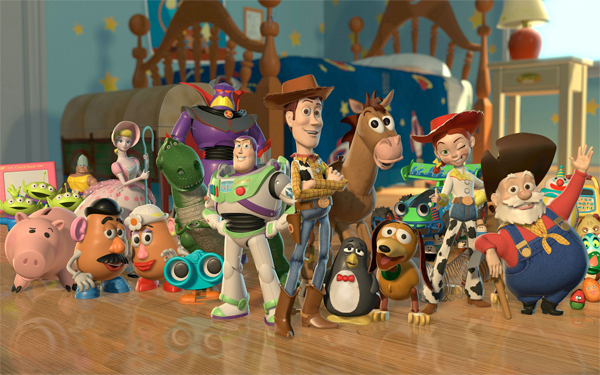
Production begins on Toy Story on January 19, 1993
Production begins on Toy Story: On this day in 1993, production begins on Toy Story, the first full-length feature film created by the pioneering Pixar Animation Studios. Originally a branch of the filmmaker George Lucas’s visual effects company, Industrial Light and Magic (ILM), Pixar first put itself on the map with special effects produced for films such as Young Sherlock Holmes (1985), which featured the first fully three-dimensional digital or computer-generated image (CGI). In 1986, Pixar became an independent company after it was purchased by Steve Jobs, the co-founder of Apple Computer.
The fledgling company’s inaugural product was the Pixar Image Computer, which the former Disney animator John Lasseter soon used to produce an animated short film, Luxo Jr. The film won Best Animated Short at the 1986 Academy Awards, raising Pixar’s profile considerably. Lasseter won another Oscar in 1989 for Tin Toy, an animated short featuring a mechanical drummer named Tinny maneuvering around in a baby’s playroom. (Tinny later became the basis for Buzz Lightyear, the spaceman toy who was one of Toy Story’s main characters.)
In 1991, based on the success of Pixar’s short films, the company signed a $26 million deal with the Walt Disney Company to develop, produce and distribute up to three animated feature films. The Little Mermaid (1989) had become Disney’s most successful film to date, and the company was ready to take more chances on innovative animation techniques. Approached by Lasseter about a possible Christmas program, Disney’s chief of film production, Jeffrey Katzenberg, instead responded with the three-picture deal.
Toy Story was the first Pixar-Disney collaboration, and the first feature-length animated film that was completely computer generated. Its plot revolved around the rivalry between the cowboy Woody, previously the favorite toy of a little boy named Andy, and Buzz Lightyear, a shiny new astronaut toy that Andy receives for a birthday present. Multiple Oscar-winner Tom Hanks lent his famous voice to Woody, while Tim Allen of TV’s Home Improvement was Buzz. Though Pixar’s long development process included drawings, paintings, sculptures and photographs, the final work for the film was all done on computers. The sophisticated animation created a vivid three-dimensional world full of color and movement, where toys–including such childhood classics as toy soldiers, Mr. Potato Head and Etch-a-Sketch–come to life.
Released in November 1995, Toy Story received universally positive reviews, and would eventually gross more than $192 million at the domestic box office and $358 million worldwide. Lasseter received a special Academy Award for leading the Pixar team, and the movie became the first animated feature ever to score an Oscar nomination for Best Original Screenplay. Toy Story’s tremendous success, and that of later films such as Finding Nemo and The Incredibles, earned Pixar the reputation of Hollywood’s preeminent animation studio. In 2006, in an effort to continue (and strengthen) the bond between the two companies, Disney bought Pixar–for which Jobs had paid $10 million in 1986–for a staggering $7.4 billion.
History Channel / Wikipedia / Encyclopedia Britannica / Disney / Pixar / Mashable
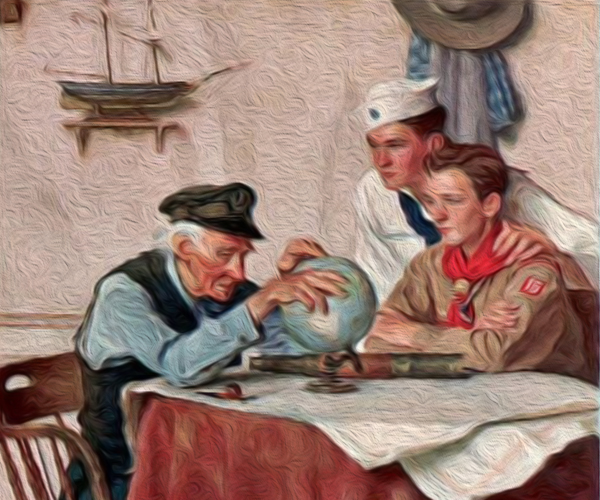
Understanding Military Terminology - Marshalling
(DOD) 1. The process by which units participating in an amphibious or airborne operation group together or assemble when feasible or move to temporary camps in the vicinity of embarkation points, complete preparations for combat, or prepare for loading.
2. The process of assembling, holding, and organizing supplies and/or equipment, especially vehicles of transportation, for onward movement. See also staging area. Joint Publications JP 3-17 (Air Mobility Operations - Defense Technical Information Center)

The Old Salt’s Corner
“A Channel Passage”
Forth from Calais, at dawn of night, when sunset summer on autumn shone,
Fared the steamer alert and loud through seas whence only the sun was gone:
Soft and sweet as the sky they smiled, and bade man welcome: a dim sweet hour,
Gleamed and whispered in wind and sea, and heaven was fair as a field in flower.
Stars fulfilled the desire of the darkling world as with music: the starbright air
Made the face of the sea, if aught may make the face of the sea, more fair.
continued ...
~ Algernon Charles Swinburne
(from A Channel Passage and Other Poems, 1904)
Full Poem

“I’m Just Sayin”
Mendel's first law, or the law of segregation, states that “Each organism has a pair of genes; that it inherits one from each parent, and that the organism will pass down only one of these genes to its own offspring. These different copies of the same gene are called alleles.”
Mendel's second law, the law of independent assortment, states that “Each organism has a pair of genes; that it inherits one from each parent, and that the organism will pass down only one of these genes to its own offspring. These different copies of the same gene are called alleles.”
~ Mendel's laws
Named for the 19th century Austrian monk Gregor Mendel who determined the patterns of inheritance through his plant breeding experiments, working especially with peas.

“Thought for the Day”
“War has rules, mud wrestling has rules - politics has no rules.”
~ Ross Perot

“What I Have Learned”
“At the end of life,
what really matters is not what we bought but what we built;
not what we got but what we shared;
not our competence but our character;
and not our success, but our significance.
Live a life that matters. Live a life of love.”
~ Anonymous

Bizarre News (we couldn’t make up stuff this good – real news story)

Uganda's “most unusual looking person” launches unlikely career as pop star
Godfrey Baguma has used his fame after he was thrust into the limelight after winning the competition searching for Uganda’s most unusual man.
The 47-year-old has used his new status as a local celebrity to form a successful career in African pop music – collecting three million YouTube views in the process.
Doctor Wilson discovered he suffers from Fibrodysplasia – a rare condition – which affects the growth and placement of his cells and tissue.
Express UK (10/27/2016) 
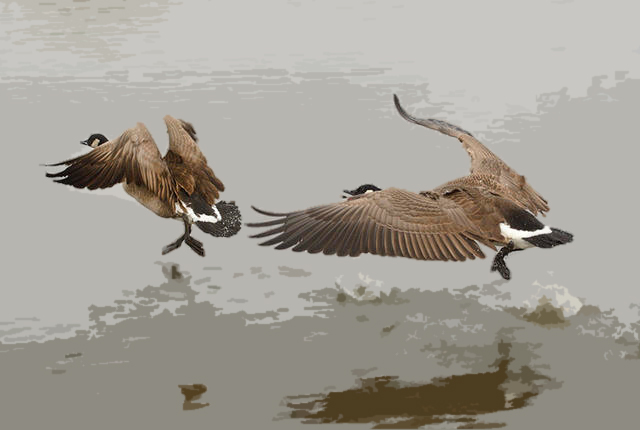
Mr. Answer Man Please Tell Us: Why is something impossible and improbable called a “Wild Goose Chase”?
You can thank Shakespeare - From Romeo and Juliet:
Romeo: Switch and spurs, switch and spurs; or I'll cry a match.
Mercutio: Nay, if thy wits run the wild-goose chase, I have done, for thou hast more of the wild-goose in one of thy wits than, I am sure, I have in my whole five.
This doesn't actually refer to the act of chasing after birds!
Back in the day, a “Wild Goose Chase” was a kind of horse-race which resembled the flight of wild-geese:
Horses started together, and whichever rider could get the lead, the other was obliged to follow him over whatever ground the foremost jockey chose to go. That horse which could distance the other won the race. This reckless sport is enumerated by Burton, in his “Anatomy of Melancholy”, as a recreation much in vogue in his time among gentlemen.
See: Sacred Texts Chapter VI. Birds.
According to Phrases.org: The horse-race meaning of wild good chase was also referenced in Nicholas Breton's The Mother's Blessing in 1602 (10 years after Shakespeare):
“Esteeme a horse, according to his pace, But loose no wagers on a wilde goose chase.”
But the “horse-race” meaning was lost by the 19th century.
In Grose's Dictionary of the Vulgar Tongue, 1811, he defines the term much the way we do today:
“A tedious uncertain pursuit, like the following a flock of wild geese, who are remarkably shy.”
Mental Floss
• Phrases.org
• Quora
• Wikipedia
• Wild Goose Chasers

Where Did That Saying Come From?
“Hit the nail on the head:” Meaning: Get to the precise point. Do or say something exactly right.
Origin: No one knows the exact origin of this phrase. What is known is that it is extremely old. It appears in The Book of Margery Kempe, circa 1438. This was an account of the life of religious visionary Margery Kempe and is considered to be the earliest surviving autobiography written in English:
“Yyf I here any mor thes materys rehersyd, I xal so smytyn ye nayl on ye hed that it schal schamyn alle hyr mayntenowrys.”
In modernised English, that reads as:
“If I hear any more these matters repeated, I shall so smite the nail on the head that it shall shame all her supporters.”
Kempe's meaning in that citation isn't entirely clear. Some have interpreted her “hit the nail on the head” as “speak severely”. The current “get to the heart of the matter” meaning is unambiguous in a later reference; William Cuningham’s The Cosmographical Glass, 1559:
“You hit the naile on the head” (as the saying is).
English Stack Exchange - Phrases.org UK

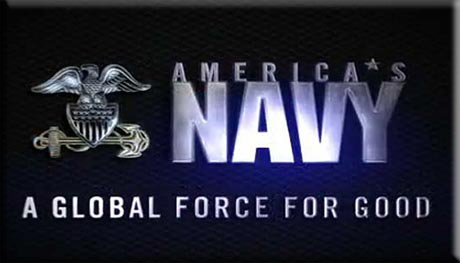
NAVSPEAK aka U.S. Navy Slang
Mustang: A magicalicer who came from the Enlisted ranks.
Mystery Shitter: An intoxicated sailor who returns from the beach and is unable to safely reach the head, defecates in random locations prior to climbing into his or her rack to sleep it off.


Just for you MARINE
Non-rate: Junior to the NCO ranks: a Private, Private First Class, or Lance Corporal; borrowed from naval use, where personnel below the petty officer ranks had no rating, thus “non-rated men”.
No impact, no idea: Expression denoting a miss on a weapons range (the scorer cannot find an impact on target); also used as an “I don't know” response.
North Carolina Lawn Dart: Expression denoting the AV-8 and the many mishaps that took place during the aircraft's development and testing.
NROTC: Naval Reserve Officer Training Corps, a college-based recruiting program for officers for the Navy and Marine Corps.

Naval Aviation Squadron Nicknames
VT-6 - Fixed Wing Training Squadrons: “Shooters”
Formerly Multi-Engine Training Group (METG) / TRAWING 5, NAS Whiting Field, Naval Air Station Whiting Field, Santa Rosa County near Milton, Florida

Science & Technology

“Bots” step up for 2016 election news coverage
• GM starts producing 200-mile electric Chevrolet Bolt
• Thorny devil found to drink through its skin with assist from gravity
• Amelia Earhart might have died as a castaway
• Project VoCo demo offers intriguing look at tech for word changes
• Vision technology: Blind woman seeing spots of light sends rays of hope to scientists
Phys.org

The Strange, Mysterious or Downright Weird

Modern life have you feeling frazzled? Flagging a bit as you rush through your day? Maybe you're one of the millions of consumers who lean on energy drinks to put a little extra pep in your step.
Though emblematic of our time, energy drinks aren't an invention of the new millennium. People have relied on them to combat fatigue for at least a century. Today, their “energy” typically derives from some type of neurological stimulant that makes people feel more energetic, or sometimes just sugar.
But there was a time when energy drinks actually contained real energy. The active ingredient in these drinks was radium, a radioactive element that releases a packet of radiant energy with every atomic decay. While the connection between consuming a radioactive element and reaping a perceived energy boost is tenuous at best, it didn't stop people in the early 1900s from ignoring the known downsides of ingesting radioactivity and risking the long-term health consequences.
Live Science (11/03/2016) 


SONG FACTS
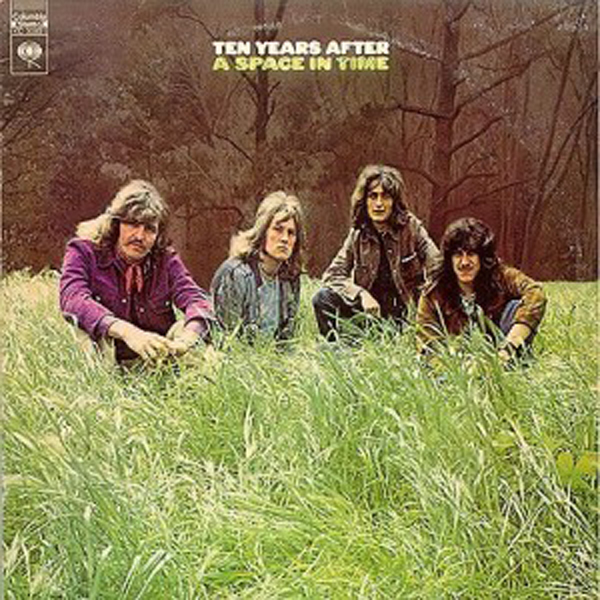
“I'd Love To Change The World” - Ten Years After
Album: A Space In Time
Released 1971 
Ten Years After were a British blues band led by guitarist and vocalist Alvin Lee. The band rose to prominence by performing at the 1969 Woodstock Festival  . The song discussed here is from the group’s 1971 “A Space in Time” album, which received near constant plays on FM radio in this year. It was the group’s biggest and only hit, though Alvin Lee remains recognized as a stellar guitar player adept at acoustic guitar riffs and electric guitar jamming. This dualism is epitomized by “I’d Love to Change the World,” which predates the quiet-loud-quiet dynamics format of grunge songs such as Nirvana’s “Smells Like Teen Spirit”
. The song discussed here is from the group’s 1971 “A Space in Time” album, which received near constant plays on FM radio in this year. It was the group’s biggest and only hit, though Alvin Lee remains recognized as a stellar guitar player adept at acoustic guitar riffs and electric guitar jamming. This dualism is epitomized by “I’d Love to Change the World,” which predates the quiet-loud-quiet dynamics format of grunge songs such as Nirvana’s “Smells Like Teen Spirit”  , about 20 years down the road.
, about 20 years down the road.
Tax the rich: feed the poor / Till there are no rich no more
Discussion of the lyrics are also divided between whether they skewer Republicans or Democrats! The above lyric may be referring to the coming of communism and the eradication of classes. Others suggest taxing the rich until they are not rich will leave all miserable – a critique of the equality of condition for all aim found in socialism and communism.
Dykes and fairies / Tell me where is sanity?
Is this homophobic and/or social conservative, or back then, a politically correct, liberally accepted way of referring to gays and lesbians?
I’d love to change the world / But I don’t know what to do / So I’ll leave it up to you.
Lee has stated on his website the song is a protest against the Vietnam War, but that also he did not have the solutions to that situation. This line is a bold statement for idealistic and utopian “freaks and hairies” of the time, Lee included. (The acknowledgement is perhaps only usurped by Dylan’s “Blowin’ in the Wind”  in which the troubadour does not answer any of the questions he poses in the song).
in which the troubadour does not answer any of the questions he poses in the song).
The repetitive sixteenth-note phrases in Lee’s guitar soloing, along with the ascending chord progression of the arrangement, imply a mounting frustration. And given that questions of policy will forever remain subject to ideological variances of opinion… and given that there are limitations to finding the “truth” through social science research methods… the song builds eternally a mounting frustration without release of tension to this day.
Ten Years After, official site / Rolling Stone magazine / Billboard / All Music / Song Facts / Political Tunes / Wikipedia
Image: “Ten Years After (album)” by Ten Years After

Trivia
● The internet was established in 1969 as a way for research to be quickly and securely shared by computers for the U.S. Department of Defense.
● Friday, September 30 deadline U.S. President Barack Obama “irrevocably” transfsers a key Internet supervision function to an unaccountable international “multi-stakeholder” entity on October 1, 2016.
● There are two U.S. states each of which borders 8 other states - MISSOURI / TENNESSEE.
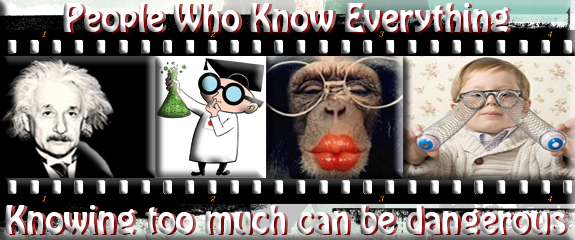
A Test for People Who Know Everything
What's the difference between a pig and a hog?
● Answer for People Who Do Not Know Everything, or Want to Verify Their Answer Live Science
Answer to Last Week's Test
Which writers created these characters? a. Uncle Tom's Cabin b. The Wonderful Wizard of Oz. c. Cinderella
Answer: a) Harriet Beecher Stowe, b) L. Frank Baum and c) Charles Perrault. Wikipedia.org

Joke of the Day
There was a papa mole, a momma mole, and a baby mole. They lived in a hole out in the country near a farmhouse
Papa mole poked his head out of the hole and said, “Mmmm, I smell sausage!”
Momma mole poked her head outside the hole and said, “Mmmm, I smell pancakes!”
Baby mole tried to stick his head outside but couldn't because of the two bigger moles. Baby mole said, “The only thing I smell is molasses.”
Pun of the Day
The cowboy that got fired from his ranch job wasn't crazy, he was just deranged.


























